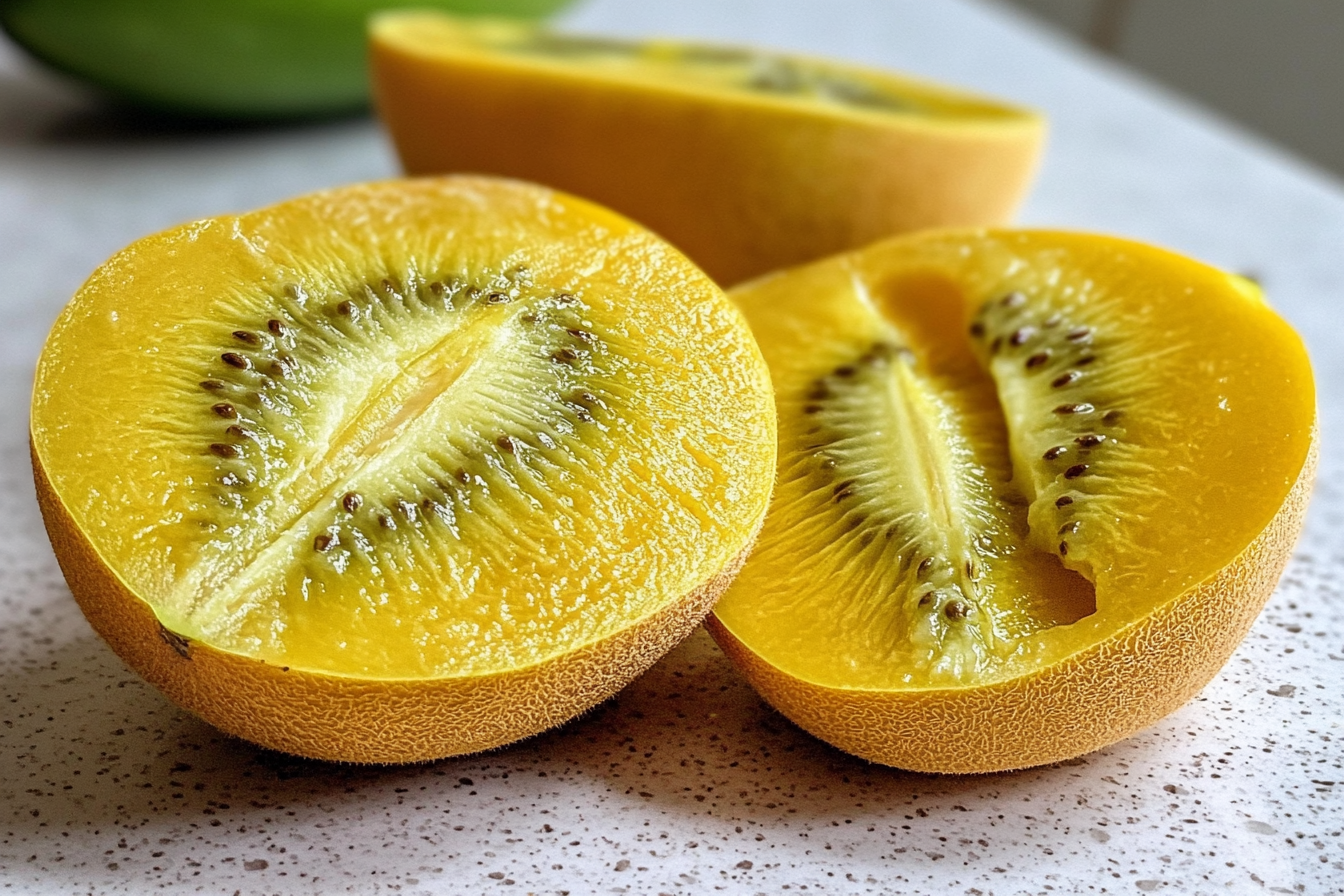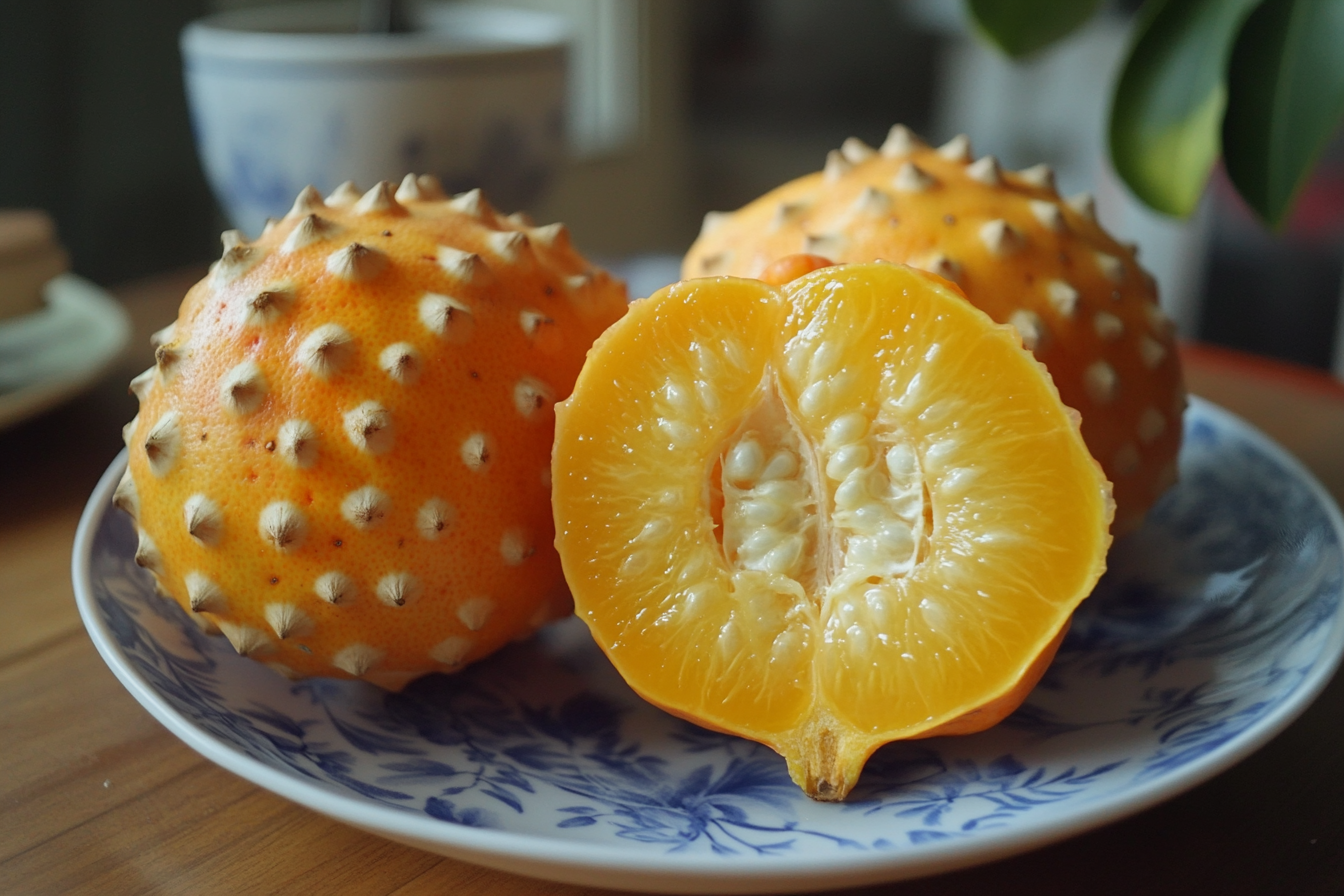Lulo and persimmon are two exotic fruits that often captivate people with their vibrant appearances and distinctive flavors. While they may look alike to the untrained eye, these fruits have significant differences that set them apart in terms of their taste, origin, and nutritional content. This article aims to clear up any confusion by providing a comprehensive comparison of lulo and persimmon, explaining their botanical differences, culinary uses, health benefits, and more. By the end, you will understand why lulo and persimmon are unique in their own right and how you can incorporate both into your diet.
Introduction
Fruits are an essential part of a healthy diet, providing vital nutrients, antioxidants, and fiber. In recent years, exotic fruits like lulo and persimmon have gained popularity due to their unique flavors and health benefits. These fruits are often mistaken for each other because of their round shape and bright orange color. However, they come from entirely different botanical families and have distinct culinary uses. This article explores the key differences between lulo and persimmon, their nutritional benefits, and how you can use them in recipes.
What is Lulo?
Lulo (Solanum quitoense), also known as naranjilla in some regions, is a tropical fruit native to the Andean regions of Colombia, Ecuador, and Panama. People know the fruit for its striking appearance, featuring a bright orange exterior and juicy, greenish pulp.Lulo belongs to the nightshade family (Solanaceae), which also includes tomatoes, eggplants, and potatoes.
Botanical Characteristics
Lulo is a perennial plant that grows in tropical climates, particularly in the high-altitude regions of South America. The plant can reach up to 2.5 meters in height and produces round, orange fruits that resemble small tomatoes. The fruit has a thick, fuzzy skin that needs to be peeled before consumption. Inside, the pulp is green and segmented, with small, edible seeds. People prize lulo for its refreshing, tangy flavor, often comparing it to a blend of kiwi, lime, and pineapple.
Cultural Significance
Lulo plays an important role in the culinary traditions of Colombia and Ecuador. People commonly use it to make jugos (fruit juices) and batidos (smoothies) because of its tart, citrusy flavor. In these regions, people often enjoy lulo as a refreshing drink, particularly during hot weather. They also use the fruit in sauces, jams, and desserts. Its unique flavor has made it a staple in South American cuisine, where people cherish it for its versatility and health benefits.
For more detailed information on how to use lulo in everyday recipes, check out the lulo fruit benefits, uses, and growing guide.
What is Persimmon?Understanding Its Origins and Uses
Persimmon (Diospyros spp.) is a fruit that belongs to the Ebenaceae family, which is native to East Asia. People most commonly associate the fruit with China, Japan, and Korea, where they have cultivated it for thousands of years. There are several varieties of persimmons, but the two most popular types are the Fuyu and Hachiya varieties. The fruit is known for its sweet, honey-like flavor and is often enjoyed raw or used in desserts.
Botanical Characteristics
Persimmon trees are deciduous and can grow up to 10 meters tall. The fruit is typically round or oval, with a smooth, glossy skin that ranges in color from bright orange to deep red. The flesh of the fruit is firm and crisp when unripe but becomes soft and jelly-like when fully ripe. Unlike lulo, persimmons have a sweet flavor, which intensifies as the fruit ripens. You can eat the Fuyu variety while it is still firm since it is non-astringent, whereas the Hachiya variety needs to be fully ripe to avoid its astringent taste caused by tannins.
Persimmons are not only popular in Asia but have also gained a following in the United States and Europe. People often eat the fruit fresh, but they can also dry it, use it in baking, or make it into jams and preserves. Persimmon’s sweetness and versatility make it a popular ingredient in various dishes, from salads to desserts.
To learn more about the different types of persimmons and their uses, you can visit the lulo fruit in Puerto Rico.
Lulo vs. Persimmon: Key Differences You Need to Know
While both lulo and persimmon are vibrant, orange fruits, they are distinctly different in terms of their botanical classification, flavor, and uses. Below is a detailed comparison of the two fruits:
Botanical Classification
- Lulo: Belongs to the nightshade family (Solanaceae), which also includes tomatoes, eggplants, and potatoes.
- Persimmon: Belongs to the Ebenaceae family, which includes hardwood trees like ebony.
Flavor Profile
- Lulo: Has a tangy, citrusy flavor reminiscent of kiwi, lime, and pineapple.
- Persimmon: Offers a sweet, honey-like flavor, especially when fully ripe.
Appearance
- Lulo: Round, orange fruit with a fuzzy skin and greenish, segmented pulp.
- Persimmon: Smooth, glossy skin with firm flesh that becomes soft and jelly-like when ripe.
Culinary Uses
- Lulo: Commonly used in juices, sauces, and desserts in South American cuisine.
- Persimmon: Eaten fresh, dried, or used in salads, baking, and desserts.
Health Benefits
- Lulo: Rich in vitamin C and fiber, with antioxidant properties that support immune health.
- Persimmon: High in vitamin A and antioxidants, which promote eye health and reduce inflammation.
Nutritional Benefits of Lulo
Lulo is a powerhouse of nutrients, making it an excellent choice for those looking to boost their health. Below are some of the key nutritional benefits of lulo:
- High in Vitamin C: Lulo is an excellent source of vitamin C, which is essential for immune health. “Lulo is rich in vitamin C and fiber, making it an excellent choice for boosting your immune system and supporting digestion. Learn more about the health benefits of lulo.
- Rich in Fiber: The fruit is high in fiber, which aids in digestion and helps regulate blood sugar levels. Fiber also promotes a feeling of fullness, making lulo a great option for those looking to manage their weight.
- Antioxidant Properties: Lulo contains antioxidants that protect the body from free radicals, which can damage cells and lead to chronic diseases. These antioxidants help reduce inflammation and support overall health.
Lulo’s Role in Digestion
The high fiber content in lulo makes it an excellent fruit for promoting digestive health. Fiber helps to bulk up stool and move it through the digestive tract, preventing constipation and promoting regular bowel movements. Additionally, the natural acids in lulo can help stimulate the production of digestive enzymes, making it easier for the body to break down food and absorb nutrients.
Nutritional Benefits of Persimmon
Persimmons are not only delicious but also packed with nutrients that support overall health. Here are some of the key nutritional benefits of persimmons:
- Rich in Vitamin A: Persimmons are high in vitamin A, which is essential for maintaining healthy vision, skin, and immune function. Vitamin A also acts as an antioxidant, protecting the body from oxidative stress.
- High in Antioxidants: Persimmons contain powerful antioxidants, including flavonoids and polyphenols, which help protect the body from inflammation and oxidative damage.
- Good Source of Fiber: Like lulo, persimmons are rich in fiber, which aids in digestion and helps regulate blood sugar levels. The fiber in persimmons also helps lower cholesterol levels and promotes heart health.
Persimmons and Heart Health
The high fiber content in persimmons makes them a heart-healthy fruit. Fiber helps reduce levels of LDL cholesterol (the “bad” cholesterol) in the blood, which can lower the risk of heart disease. In addition, the antioxidants in persimmons help reduce inflammation, which is a key factor in the development of cardiovascular diseases.
Culinary Uses of Lulo
Lulo is a versatile fruit that can be used in a variety of dishes, from refreshing beverages to decadent desserts. Below are some popular ways to incorporate lulo into your diet:
Lulo Juice (Jugo de Lulo)
One of the most common ways to enjoy lulo is by making jugo de lulo, a popular drink in Colombia and Ecuador. To make the juice, simply blend the peeled fruit with water, sugar, and ice. The result is a refreshing, tangy drink that is perfect for hot days.
Lulo Sauce
Lulo’s tangy flavor makes it an excellent ingredient for sauces, particularly in savory dishes. You can cook the fruit down with sugar and spices to create a zesty sauce that pairs well with meats, fish, and vegetables.
Lulo Desserts
Lulo’s unique flavor also lends itself well to desserts. The fruit can be used in pies, tarts, and cakes, or blended into smoothies and ice creams. Its tangy taste adds a refreshing twist to sweet treats.
Culinary Uses of Persimmon
Persimmons are incredibly versatile and can be enjoyed in a variety of ways, from raw to baked. Below are some popular ways to use persimmons in your cooking:
Fresh Persimmon
One of the simplest ways to enjoy persimmons is to eat them fresh. The Fuyu variety can be eaten like an apple, with the skin on, while the Hachiya variety should be eaten when fully ripe and soft.
Persimmon Salad
Persimmons add a sweet and colorful element to salads. They pair well with leafy greens, nuts, and cheeses, creating a delightful balance of flavors and textures.
Baked Persimmon Desserts
Persimmons are often used in baking, particularly in cakes, puddings, and pies. Their sweetness intensifies when baked, making them an excellent ingredient for desserts.
Historical Significance of Lulo and Persimmon
Lulo’s History
Lulo has been cultivated in the Andean regions of South America for centuries. The fruit played an important role in the diets of indigenous people, who used it for both culinary and medicinal purposes. Lulo’s popularity spread throughout Colombia and Ecuador, where it became a staple in local markets and kitchens. People still widely enjoy lulo in these regions today, and its unique flavor has made it a sought-after fruit in other parts of the world.
Persimmon’s History
Persimmon has a long history in East Asia, particularly in China, Japan, and Korea. People have cultivated the fruit for over 2,000 years, and it holds cultural significance in these regions. In China, people associate persimmons with good luck and use them in traditional celebrations. In Japan, they dry and preserve the fruit for use during the winter months. The West eventually embraced persimmon’s popularity, and farmers now grow it in the United States and other countries.
FAQs
Is Lulo the same as naranjilla?
Yes, lulo is known as naranjilla in Ecuador and some other regions. They are essentially the same fruit but go by different names depending on the region.
What is Lulo called in English?
Lulo does not have a specific English name. It is commonly referred to as lulo or naranjilla, depending on the country.
Can you eat Lulo raw?
Yes, but it is most commonly used in juices or cooked dishes because of its tart flavor.
What fruit is similar to Lulo?
Lulo is often compared to fruits like kiwi, gooseberry, and lime, due to its tangy and citrusy flavor.
Is Lulo related to passion fruit or persimmons?
Lulo is not related to passion fruit or persimmons. It belongs to the nightshade family, making it more closely related to tomatoes and eggplants.
Conclusion
In conclusion, while lulo and persimmon may look similar at first, they are very different in terms of plant type, taste, and health benefits. Knowing these differences helps you enjoy each fruit for its special qualities. Whether you like the tangy, citrus flavor of lulo or the sweet, creamy texture of persimmon, both fruits offer a tasty variety for your meals.
Explore more recipes and tips on how to incorporate these fruits into your meals at Eira Recipes.



